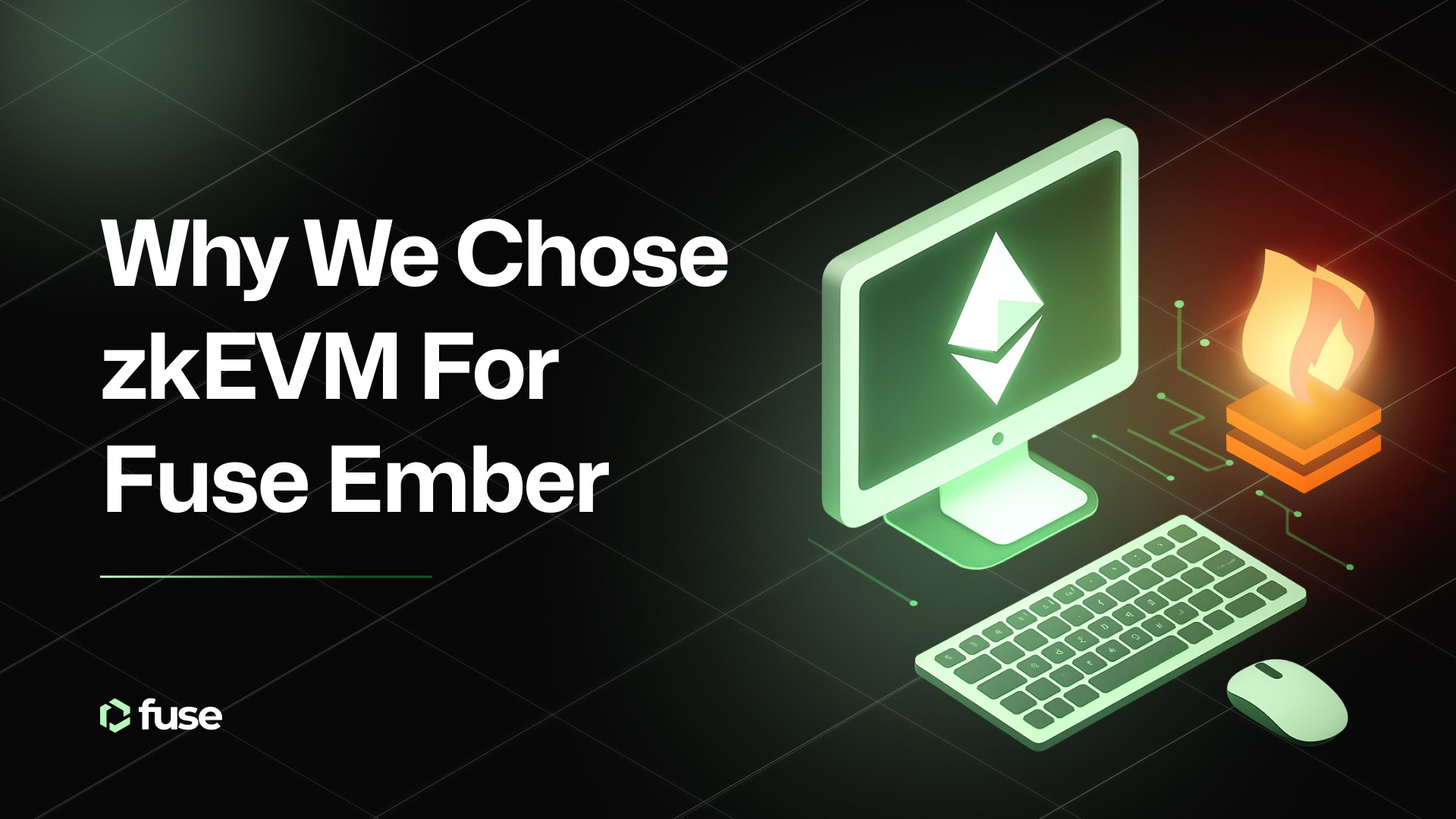ZK rollups are a blockchain scaling technology that also deliver a combination of privacy and flexibility – making them the ideal choice for the Fuse Ember L2 network.
Back in December 2017, the Ethereum network was brought to a standstill by CryptoKitties, an early and incredibly popular Web3 game. As players rushed to breed and trade digital cats, their on-chain activity drove up gas prices and caused a backlog of unconfirmed transactions that took days to clear.
While the need to scale Ethereum beyond its initial capabilities of 15 transactions per second was already clear, CryptoKitties underscored the shortcomings of the platform and kickstarted a wave of research and development. Without significant changes, Ethereum could not hope to serve as the infrastructure for a new, decentralized global economy.
Optimistic And ZK Rollups
One of the problems of scaling blockchains is that there is a trade-off between high throughput, security, and decentralization. It is hard to have all three of these: the so-called scaling trilemma.
A number of different approaches to scaling Ethereum were proposed and tested in various forms. These included state channels, side chains, child chains, and rollups. Of these, rollups are the most decentralized and secure, since they inherit Ethereum’s security guarantees, and have emerged as the leading solution.
Rollups work by batching, or rolling up, a large number of transactions, then posting a proof for all of them to the Ethereum blockchain. In this way, hundreds or even thousands of transactions can be combined, dramatically reducing the load on Ethereum L1. There are two main types of rollup: optimistic and zero-knowledge (ZK).
- Optimistic rollups assume all transactions are valid (hence are “optimistic”), but have a window for fraud challenges before transactions are finalized on mainnet.
- ZK-rollups use zero-knowledge proofs to mathematically prove that transactions are valid.
Zero-knowledge proofs are a powerful form of cryptography that enable a user to demonstrate that a statement is true, without exposing any information about that data. A simple real-world example of a ZK proof would be proving ownership of a smartphone by unlocking it using your thumb print. An observer does not need to see your thumb or know any information about it for you to do this.
Layer-2 solutions built with optimistic rollups – which include Optimism, Arbitrum, and Base network – require a delay for withdrawals back to mainnet to allow for fraud challenges. This can be as much as a week. ZK rollups allow instant validation, with built-in privacy, since no transaction information needs to be shared to prove that those transactions are valid.
L2 platforms using optimistic rollups were deployed first, since ZK rollups are harder to build with. They also have higher computational costs. However, their advantages mean that they offer a better overall solution. Ethereum co-founder Vitalik Buterin has commented that “In the limit (5-10 years into the future), I expect that all rollups will be ZK rollups”. Platforms including Scroll, zkSync, and Starknet have deployed ZK-based scaling solutions. Fuse Ember will do the same.
ZK Benefits For The Ember L2
Aside from the general benefits described above, in our case, a ZK rollup offers some significant advantages that make this approach particularly suited to the use cases of the Ember network.
Scalability
Firstly, ZK-rollups offer a high degree of scalability. This is important for Fuse Ember, which is intended for business adoption. The network is designed to process up to 9,000 transactions per second (tps), enabling it to compete with traditional payments platforms like Visa.
Privacy
Secondly, zero-knowledge proofs enable a privacy-by-default approach to transactions, which is particularly attractive to businesses. For example, a company can pay a supplier or contractor, but there is no information visible on-chain that shows who has been paid, or how much. Similarly, an investment fund can purchase assets without competitors being able to front-run their trades.
While the transparency of blockchains is one of their key advantages, this also opens the way for a number of exploits, including front-running and other MEV attacks, and even phishing and physical targeting of users for the purpose of extortion.
Business adoption of blockchain has been held back by a lack of privacy. In some cases, there are legal barriers, in the form of data protection laws (like Europe’s GDPR). JP Morgan’s Kinexys white paper notes that “enhanced privacy measures are crucial for improving access to digital assets,” and it’s fair to say that solving this issue is vital for bringing trillions of dollars of institutional capital on-chain.
Compliance
ZK proofs don’t just increase privacy. Critically, they allow users to prove that a certain action has been taken without revealing any underlying information, thus compromising that privacy. This is a valuable means for businesses to maintain both compliance and security.
Take the case where a regulator or accountant wants to check payments made by a business. The company can prove that all payments add up to a certain amount, or that individual payments have been made, without revealing how much each payment was, or the recipient of that payment. Information can selectively be revealed according to the needs of the auditing body and relevant laws.
Similarly, there are advantages for identity management. Platform users can prove a certain fact about themselves without revealing any sensitive information. For example, they can demonstrate they are over 18 without actually providing their date of birth.
Account Abstraction Use Cases
Finally, ZK proofs will enable some unique benefits for Ember users.
One of the features we’ll be deploying on Ember is Account Abstraction (AA). AA essentially allows a regular end-user wallet or “externally-owned account” (EOA) to act like a smart contract, providing far greater flexibility in the way transactions are made.
AA will power various security and technical functionality, including differential gas pricing. In short, bulk transactions made by businesses may be subsidized, allowing for cheaper gas prices. ZK proofs allow Ember’s validators to bundle transactions and conduct fee calculations off-chain, while still guaranteeing the correct amount has been paid. This provides greater scalability and efficiency for businesses, helping drive adoption in the process.
We’ll be exploring Account Abstraction further in another blog, and some of the ways Ember will use AA to improve the UX for both businesses and regular users.
Join the Fuse journey today and help shape the future of payments.
Twitter | Telegram | Discord | Announcements
.svg)
.svg)











